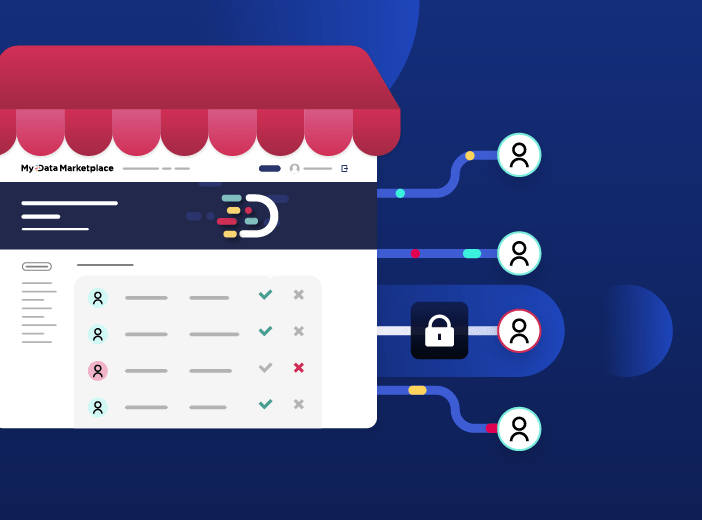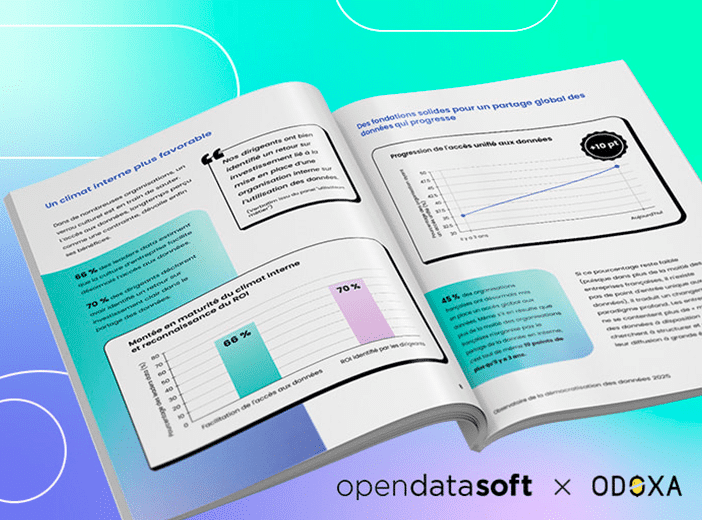How to generate meaningful ROI from your data portal
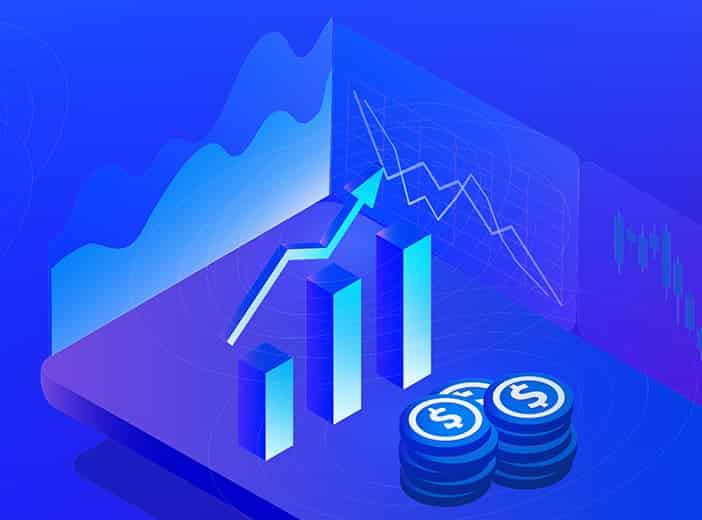
Organizations across both the public and private sectors are increasingly embracing data portals to provide centralized access to all their data for their audiences, whether employees, citizens, partners or other stakeholders.
However, at a time of economic uncertainty data portal programs have to compete with multiple other initiatives when it comes to securing budget. That means that Chief Data Officers and their teams need to demonstrate the return on investment (ROI) that internal and external data portals deliver. This blog explains the key benefits and what to look for in a data portal solution to guarantee strong results and meaningful ROI.
The financial benefits of internal and external data portals
While every use case is different, data portals deliver key benefits in five major areas:
Reduced costs
Citizens, customers and other stakeholders increasingly want to know more about the performance and activities of municipalities, cities, government departments and companies. In many cases, such as the public sector, publishing data to answer questions is compulsory, being mandated by Freedom of Information legislation and other regulations. Responding manually to individual queries is time-consuming and resource-intensive, often requiring frontline teams to contact specific departments to get answers. By switching to publishing information proactively through a data portal, organizations help people find information themselves on common topics, reducing their workload and costs. If new requests are made that aren’t covered by the data portal, information can automatically be added when they are answered, strengthening the portal for the future. As well as municipalities and public sector bodies, businesses can use data portals to publish information on key performance indicators, particularly around sustainability metrics and progress towards ESG goals.
Data portals can also bring direct cost savings. For example, the City of Long Beach publishes information from its Salesforce-based Go Long Beach 311 reporting system on its open data portal. This shows the type of requests made (such as littering and graffiti), their location, when they were made and their current status. Importantly, as well as the public, this data is used by internal employees. As they can access information via the portal, they don’t need to be issued with Salesforce software licenses, driving direct savings for Long Beach.
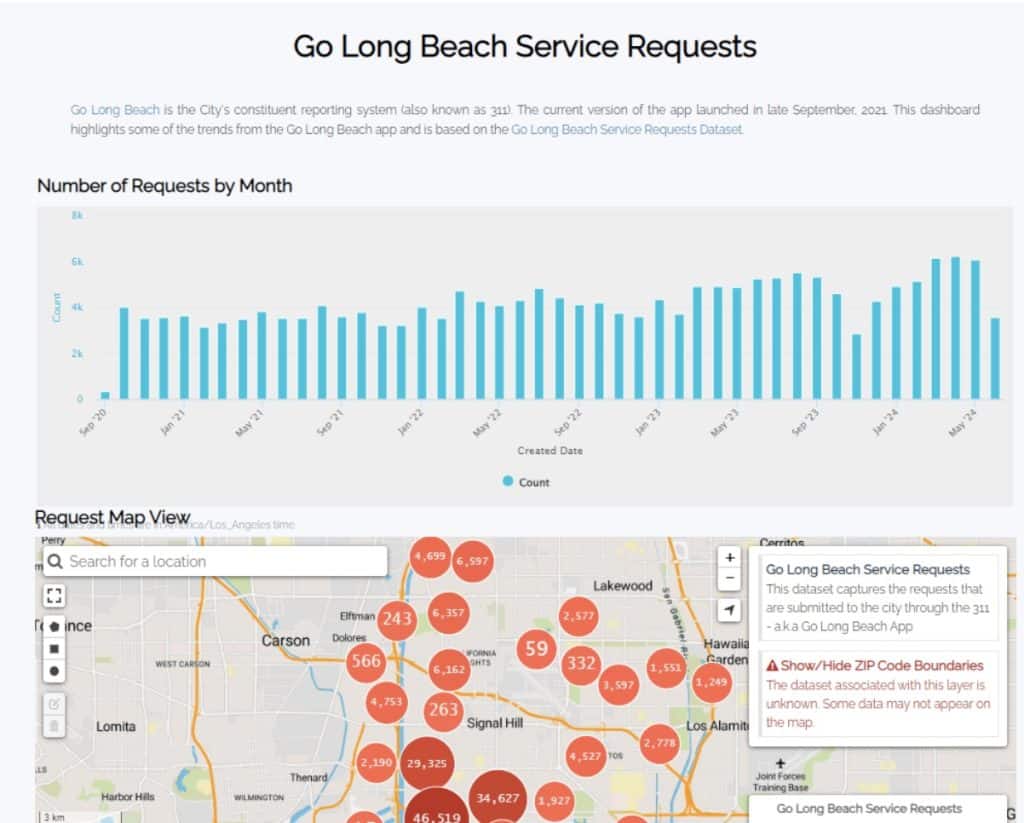
Greater efficiency through self-service
Many calls to municipal departments or teams within organizations are simply checking on the status of previous requests or asking for common data. By making this information available via self-service on their internal or external data portal, organizations remove the need for unnecessary contact, improving the experience for customers and increasing efficiency.
In the Town of Cary, North Carolina, information on all permit applications, such as for building
alterations, is available through a drill-down map via its data portal. Citizens can see the exact status of their application, avoiding the need for them to call, and therefore freeing up staff time to focus on more complex queries.
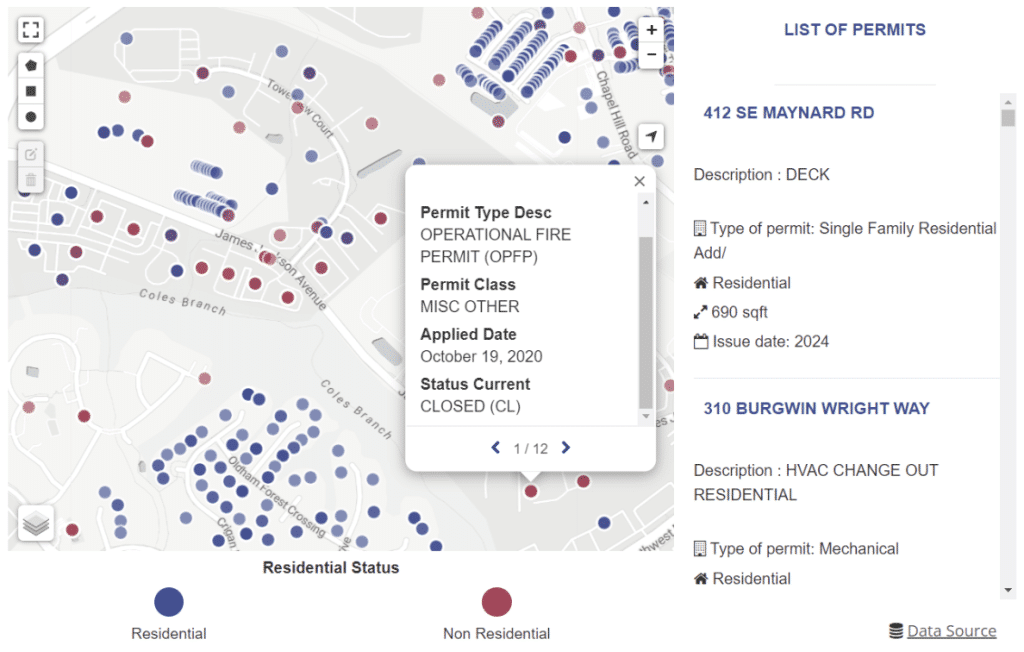
Better decision-making
Access to complete data gives fuller context and understanding when making decisions across both the private and public sector. Using data enables people to be more confident when making decisions, enabling businesses to seize new opportunities, be more agile and grow their revenues. The same requirement to make better decisions applies to government bodies, with elected officials needing more detailed data to make informed decisions around areas such as policy, budgets and future plans.
Delivering this data to underpin better internal and external decision-making is a key role of the North Carolina Office of State Budget and Management (OSBM)’s data portal. It delivers relevant, comprehensive data covering areas as diverse as population, labor force, education and agriculture, supplied by 20 state departments. Users include legislators, officials planning new initiatives, and even people looking to relocate to the state, who want to know about facilities and amenities in particular areas.
Increased collaboration
In a more complex world, more and more issues can only be solved through collaboration between departments, agencies and wider ecosystems. Making data available to all through a centralized portal underpins this collaboration, providing a single source of truth that everyone can access, use and benefit from. Data-driven collaboration increases innovation and efficiency, breaking down barriers to create cross-functional teams.
The City of Salinas in California, uses data is to underpin the Community Alliance for
Safety and Peace (CASP) program, a community initiative involving multiple groups to target youth and gang violence. This uses data, such as on crime rates, socioeconomic information
and school performance to structure the program, focus strategies and approaches, and monitor progress. The resulting data-driven program has reduced youth violence by over 60% in the last decade, helping build a stronger, more peaceful community.
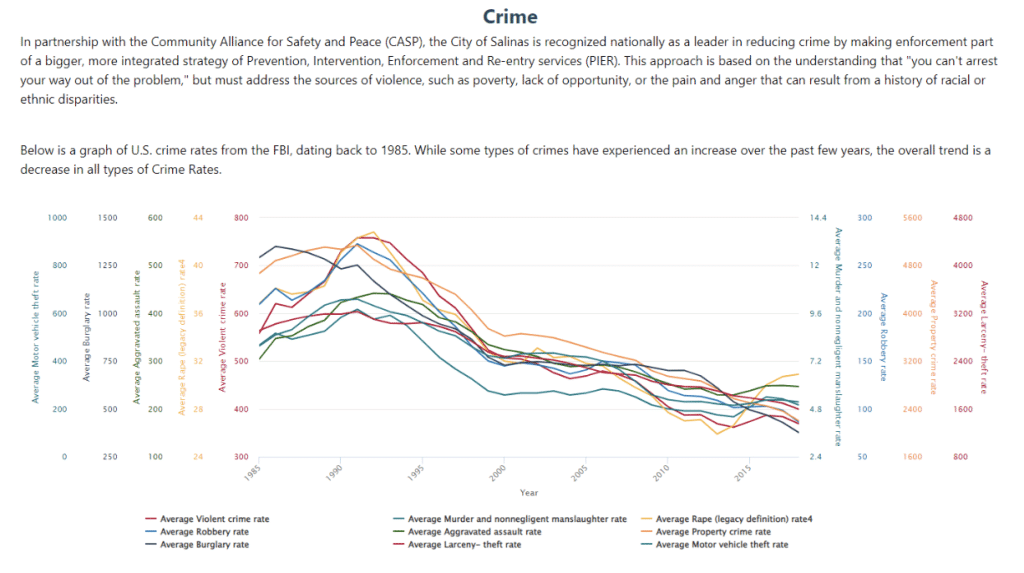
New sources of revenue, including AI
Organizations recognize that data is an increasingly valuable commodity that can generate new revenues when shared securely with other businesses and public bodies. Once data is processed and anonymized to remove any confidential information, it can be used to create new services that differentiate businesses and bring in new sales. Data is also essential to training AI models and algorithms, delivering gains in efficiency, productivity and innovation.
Internet of Things (IoT) company Birdz by Veolia now uses the data it collects from its water sensors to create real-time dashboards for individual customers. This new service enables customers to improve water resource management and detect leaks more effectively, while differentiating Birdz from its competitors.
What capabilities does your data portal need to deliver ROI?
To realize the ROI benefits listed above, people have got to want to use your data portal. If they don’t know it exists, have a poor experience, or if it doesn’t provide the data they need, they simply won’t use it. That means all the effort, time and resource put into collecting, processing, enriching and publishing data will be wasted, preventing organizations becoming truly data-centric.
Particularly for larger companies, when planning your data project it can be tempting to build it yourself or to use open source technology. However, this generates additional costs and requires greater resources to implement and manage, adding to the workload on your IT team, who are not necessarily experts in building this type of solution. Learn more about the pitfalls of building your own portal from scratch in our blog.
Consequently, it makes sense to work with a dedicated data portal solution provider, choosing one whose technology has these seven capabilities:
Intuitive interface
Users expect to be able to immediately interact with your data portal, without requiring any training. That means your portal has to be as easy to use as an ecommerce website, with a similar, intuitive interface, seamless navigation and built-in help functions. This will drive greater engagement, ensuring people value and use your portal on an ongoing basis.
Seamless search and data discoverability
People need to be able to find the right data for their needs quickly and confidently. However, given that most users are not data specialists, they may be unsure about what data assets are available, and which are the best for their needs. Your portal therefore requires powerful search and data discovery capabilities, using AI and natural language search to understand self-service queries and provide the best available data, in usable formats.
Simple back-end administration
Data teams have heavy workloads, managing the growing volumes and variety of data that organizations create and ensuring it is usable by all. They don’t want to spend all of their time managing their data portal, so ensure that you choose a solution that is easy to administer, includes features to automate management, and can be accessed via other tools.
The ability to centralize and publish all data assets
Your data portal has to be a single place where employees, citizens and stakeholders can access all of your data. That means it needs to be able to easily connect to all of your data sources across the organization, be able to publish data assets such as visualizations and dashboards, and make data available in the right formats for everyone to use, such as via downloads and APIs.
Ease of integration with data stack
Organizations have invested significantly in building a comprehensive data stack, covering everything from data collection to storage and analysis tools. Data portal solutions act as the “last mile” of data flows, providing information from across your data stack to users. This means that they need to seamlessly integrate with all your other tools, ensuring efficiency and delivering a unified approach to data management.
The ability to enrich data
Adding external data, such as geographic or public reference information, to internal datasets adds context and depth, dramatically increasing its value. Look for a technology provider that makes it easy for you to enrich data assets by giving straightforward access to relevant datasets.
As well as its Data Hub, which contains over 33,000 public datasets, Opendatasoft offers its customers prepared and packaged datasets, organized by sector and based on actual use cases. These ready-to-use datasets allow you to enrich your data to meet your specific needs and the wider challenges of your sector.
Strong support and consultancy advice
To get the best out of your data, it is vital to work with an experienced partner that has helped other organizations to create, launch and grow their data portals. They should have worked on a range of projects to share data, enabling you to tap into their expertise to ensure your data portal meets your objectives and delivers a clear ROI.
Effective data portals ensure that organizations maximize value from their growing data, generating meaningful ROI and creating the foundations for data-driven organizations. Find out more about how to increase your data’s impact in our in-depth ebook.


